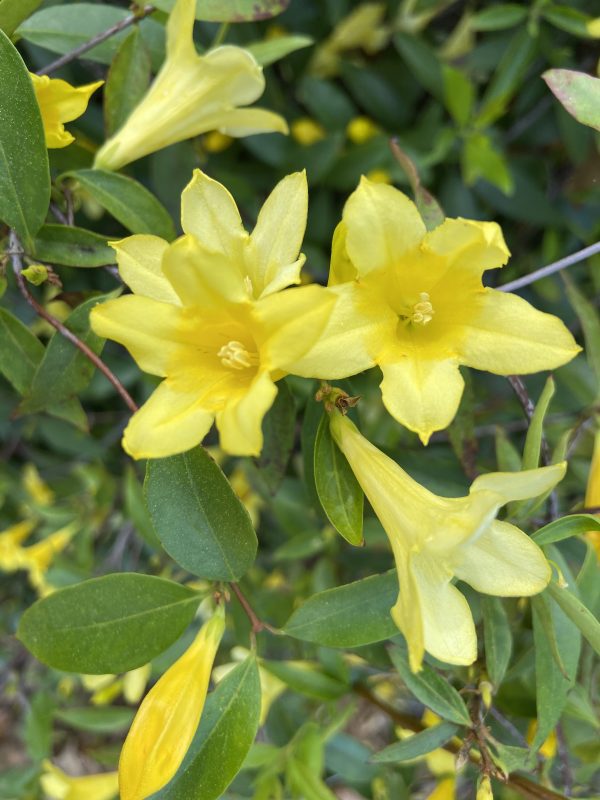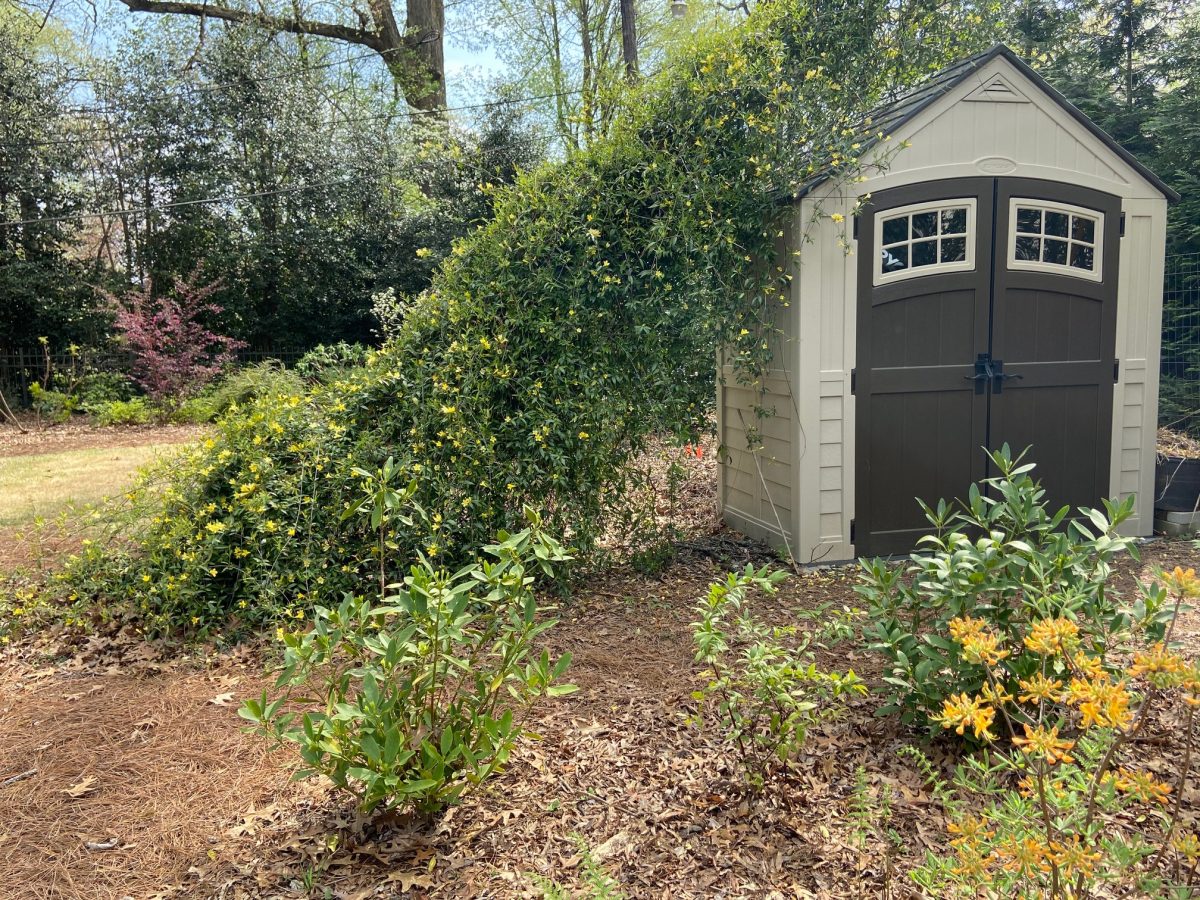Social distancing in nature

After weighing the pros and cons of taking groceries to elderly parents; after assessing the risk of exposing them to coronavirus while driving them to the doctor; after worrying about friends who are sick in New York City, those who are considered essential workers and those who are now unemployed; after obsessively wiping surfaces with bleach solution and slathering hands with sanitizer; after years of developing virtual networks only to be unnerved by social distancing, I find moments of respite while pulling winter weeds.
Henbit, wintercress and chickweed yield with a tug in rain-softened clay. Like the virus, they offer little resistance if you cut them off at the root, but if left to seed, they scatter far and wide. The dandelions have an intractable taproot, so I usually hit them with a spray of glyphosate, but this spring a worried voice tells me to leave them – the leaves might make a nice salad, especially if it’s prettied up with redbuds and violets.
In the garden, gloves are optional. Dirty hands are not a threat. This time of year, an afternoon of yard work leaves me gritty and gilded with pine pollen. A long bath or shower is never more welcome. What a relief to emerge clean, and also germ-free.
When you’re ordered to shelter in place, you fully appreciate the luxury of having your own backyard, especially given the plight of people in our county who are homeless or living in overcrowded housing. It’s a place where my dogs can chase a harmless garden snake from the patch of zoysia grass into the shrub border mulched with leaf debris. They quickly lose interest. They’d rather eat rabbit poop or roll on the desiccated worms unearthed during recent rains.
Their antics can be exasperating when there’s an appointment to make or deadline to meet, but when the world stands still, few things are more amusing than a Chihuahua squiggling on a worm.
Weeks ago, I procured enough pine straw to refresh the paths that circle the yard. They’re now in heavy rotation. Compared with the early blaze of azaleas, Yoshino cherries and daffodils throughout my neighborhood, most of the native plants in my garden are slow to wake from their winter slumber. Still, every turn around the yard brings a revelation. Buds on the painted buckeye and flame azaleas seem to swell by the hour. The leaves of the nearby ninebark anticipate their citrus hues. At their feet, the fiddleheads are unfurling.
The flagrant scents of daphne, edgeworthia and sweet-breath-of-spring have faded, but I’m reassured when I catch a whiff of the prolific Carolina jessamine. The first plant I added to my barren garden, it has climbed the entire length of an unsightly guy-wire and attracted a pair of brown thrashers assessing the tangle as a potential nesting site.

Carolina jessamine growing up a guy wire. Photo: Ruth Ann Grissom
In early spring, birdsong bridges the seasons. The white throated sparrow’s winter lament mixes with the cardinal’s liquid burble. The cedar waxwings will soon head north, but for now their icy whistles punctuate the robin’s cheerful lilt. The rufous-sided towhee with a unique, stuttering song once again announces his presence. Drink, drink, drink your tea! This will be his third season in my garden. I’m heartened he has survived another winter, and heartened by his familiar song.
A growing body of scientific study suggests nature is fundamental to our physical and emotional well-being. Richard Louv has said what he came to call “nature deficit disorder” was “virtually ignored by the academic world” when he published Last Child in the Woods in 2005. A dozen years later, when Florence Williams published The Nature Fix, that had changed dramatically. Spending time in nature has been shown to decrease blood pressure, anxiety, aggression and levels of stress hormones while also improving self-esteem, immune system function and attention deficit disorder. The evidence is so compelling doctors have started “prescribing” nature as an antidote to stress.
That apparently resonantes during this time of coronavirus. On a cloudy weekday morning toward the end of March, the parking lot at the Wood Run trailhead in the Uwharrie National Forest is packed. And it can be challenging to practice adequate social distancing in a popular Charlotte park. For all the devastating consequences of coronavirus, perhaps it will inspire us to reconnect with nature instead of retreating to our screens.
As of this writing, campgrounds and other facilities are closed but trails in the Uwharrie National Forest and Mecklenburg County parks remain open (though county officials have said they are considering further restrictions). Morrow Mountain State Park is closed. Remember to maintain at least six feet of distance from other hikers and avoid overcrowding.